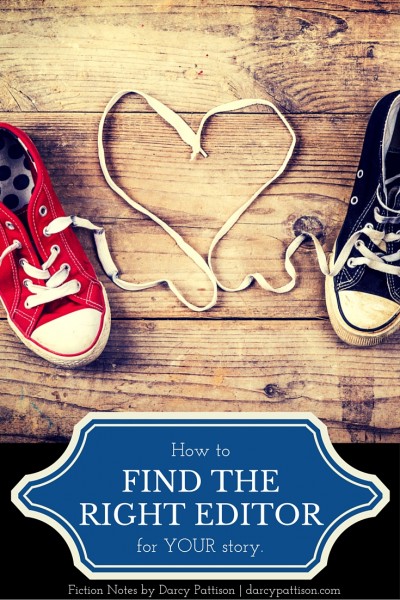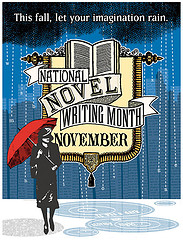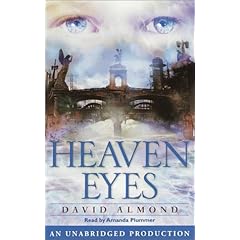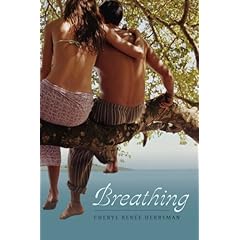new posts in all blogs
Viewing: Blog Posts Tagged with: write a book, Most Recent at Top [Help]
Results 1 - 10 of 10
How to use this Page
You are viewing the most recent posts tagged with the words: write a book in the JacketFlap blog reader. What is a tag? Think of a tag as a keyword or category label. Tags can both help you find posts on JacketFlap.com as well as provide an easy way for you to "remember" and classify posts for later recall. Try adding a tag yourself by clicking "Add a tag" below a post's header. Scroll down through the list of Recent Posts in the left column and click on a post title that sounds interesting. You can view all posts from a specific blog by clicking the Blog name in the right column, or you can click a 'More Posts from this Blog' link in any individual post.
I talked with an editor earlier this week about my new novel, The Blue Marbles, a sff YA and found that editorial input comes in two forms–and these are so important to finding the right editor for your story.
Positioning in the Market Place

The first thing we talked about was our visions for the story, to see if we meshed. This is very much a marketing discussion. Where does the story fit into the marketplace? Who would read this book? Is this a middle grade or a YA?
Vastly important, you must know your audience because it determines so much of the next question about the quality of the story. If my story is a YA, it means that I need to follow certain conventions of the genre. The protagonist should be of a certain age; he’s got a certain outlook about dating and girls; he’s reacting to family in certain ways. It brings up questions such as should he be able to drive or not? If the story is middle grade, the tone of the story would be very different. The answers to the questions would be vastly different.
Even saying that it’s a YA, isn’t quite enough. Is it a young-YA or is it closer to the New Adult category? In other words, will the tone of the romance involve just a brief kiss or something much more physical.
What happens when you disagree with the editor’s opinion of where to best sell this story? I’ve seen writers struggle with this because they want to write a YA. They read YAs; they talk YAs; they live YAs. But when they write, what comes out is a middle grade. Sigh. It’s frustrating. What you love isn’t necessarily what you can write. (At least not yet.)
YOU want to push the story to a YA; the editor wants to push it to middle grade BECAUSE she thinks s/he can sell the story there.
In some ways, this is a career question and not just an editing-this-novel question. Where do you have the best chance of creating a career for yourself? HINT: It might be different than what you thought.
Writers are notorious for not SEEING clearly what we write. Sometimes, you have an inkling that, well, this might be middle grade instead of YA. But you don’t WANT it to be MG; you love YA. Sorry.
An editor’s strength is that s/he has a pulse on two things: great story writing and marketing great stories. For an editor, those two things must match up. And you, as the writer, must either trust that editor or find a different one. You must also decide if you want a career based on the editor’s positioning of the book in the marketplace. If it’s positioned as a middle grade, can you–do you want to–follow up with a second middle grade? Because careers are built on building a readership who consistently comes to you for a certain type of story.
When a manuscript sells, your first thought is celebration! Yahoo! Your second thought is, “What next?” To build a readership, what story is the logical follow-up. When someone reads THIS story, which of your possible stories would they naturally pick up next and love just as much or more?
This question of the editorial marketing vision for your story is crucial. You must share your editor’s vision for the story. Otherwise–it may not be the best fit for you, your story, and ultimately, your career.
Tell the Best Story Possible
The second thing a great editor can do it help you create the best story possible, given the shared vision.
For me, the discussion had some themes I’m familiar with:
Setting. While my natural world settings were strong, when the story veered into a school–where the YA would be very apparent–I need more work. Setting is crucial to making sure the reader is grounded in your story.
Raise the stakes. The editor suggested a change that would raise the stakes of my story. The reader should always be invested in finding out what happens next, and if you can put more at risk, the stakes pull them through the story.
Emotional resonance. On a similar note, the emotional story should resonate with the reader and impact them in some way.
Everything we discussed seemed reasonable and necessary because we were heading toward a mutually agreed upon goal. Without the shared vision, the specifics of a revision are agonizing; with a shared vision, revision is like dancing with a friend, where you mirror each other’s moves in perfect harmony.

Today, I have a guest post from author, freelance writer, and writing coach Suzanne Lieurance.3 Reasons Why Most People Who Say They Want to Write a Book Will Never Write OneBy Suzanne LieuranceAlmost everyone has dreams of writing a book some day. Yet, for most people this will never become more than a dream. And thousands of others who do manage to START writing their book will give up midway through and never finish writing it. As a published author and a writing coach, I've discovered there are basically 3 reasons most writers give up on their dream of one day writing a book:
1. Wanna be authors think their book has to be one of the best books ever written.This is a lot of pressure for any writer, much less a first time author. No one could measure up to this, so it's safer and easier to give up before ever starting. But the truth is, published authors simply try to write the very best book they can write. They don't worry about it being one of the best books ever written.
2
. Wanna be authors figure they really don't have anything new and different to say that hasn't already been written about before in other books.That old saying, "there is nothing new under the sun" is true. So published authors don't worry that someone else may have written a book about the same topic they wish to write about. Instead, they try to give their book a unique "spin" on the topic. That means they write about it in a somewhat unique way.
3. Wanna be authors think writing should be easy. If it isn't, that means they weren't meant to be a writer. When they start writing, and the writing becomes difficult, they figure they must not be cut out to be an author.
Writing is a craft and it is often just plain hard work even for the best of writers. In fact, good writing is usually good rewriting, so most of the well-known authors work hard at their writing. They write, then rewrite and rewrite until they get the work just right. If they stopped when the writing got difficult, they'd never publish anything either. As you can probably tell by now, each of these 3 reasons for giving up on writing a book is merely an excuse for not following through on a dream.
If you dream of writing a book someday, don't expect to write one of the best books ever written. Don't worry that you have nothing new to say. Just try to say it in a new way. And, most importantly, don't expect the writing to be so easy that there's nothing to it. Just keep plugging along and eventually you'll have a finished manuscript you can be proud of.
For instruction, tips, and advice to help you start and finish writing your book, join the The Working Writer's Club (
http://workingwritersclub.com).
Suzanne Lieurance is a fulltime freelance writer, the author of 22 (at last count) published books, and the Working Writer's Coach.
Article Source: http://EzineArticles.com/?expert=Suzanne_Lieurance ~~~~~~~~~~~~~~~~
Related Writing Articles:Keep Your Writing Goals Front and CenterSuccessful Writing Strategy: Know Your In

By:
Darcy Pattison,
on 10/20/2009
Blog:
Darcy Pattison's Revision Notes
(
Login to Add to MyJacketFlap)
JacketFlap tags:
author,
progress,
NaNoWriMo,
first drafts,
first draft,
how to write a novel,
word count,
writing career,
finish,
write a book,
Add a tag
NaNoWriMo and the Evolution of a Writer
Follow her NaNoWriMo progress at her blog, Catch a Star if It Falls.
For years I dreamed of being a published writer, but I didn’t actually write anything. I had plenty of excuses – college, a full-time job, marriage – but I couldn’t stop that yearning to create stories. NaNoWriMo changed everything.
NaNoWriMo
National Novel Writing Month, or NaNoWriMo is described a a writing contest with no rules, no judges and no awards; winning manuscripts are deleted. The goal is to write 50,000 words during the month of November. Of the 120,000 writers who start, about 18% complete the 50,000 words. There are special NaNoWriMo rules for schools that participate.
NaNoWriMo offered a firm deadline and a supportive community, but most of all, it taught me discipline. If I could write 2,000-words-a-day during a November, I could do it all year long. If I dared to post excerpts of my novels-in-progress, I could work up the nerve to submit my work to agents and editors. But it’s been a gradual process, and it reflects my personal maturity as well as the maturity of my writing.

8 Years of Writing
2002
Too afraid to start a work from scratch, instead I wrote a fictionalized autobiographical piece about a disastrous family trip that took place when I was ten. About a week into the November, I posted on the NaNoWriMo forums and declared myself a failure. I was working ten-hour shifts four nights a week, and I was far too tired to write when I got home. My fellow writers encouraged me to keep going. I did. I forced myself to type 5,000-7,000 words on each of my nights off and I made my goal.
2003
I dove into my first original novel effort about a ghostly unicorn, an abused girl, and selkies. No outline, no real plot. I felt tremendously proud of achieving my 50,000-words, but when I re-read my work a few months later, and I was stunned to find it made little sense and my heroine had zero personality. Ouch.
2004
My husband was on full naval deployment and I was entering my second trimester of pregnancy. Writing was a bit tricky since I felt nauseous if I sat at the computer for more than thirty minutes at a time. I somehow fulfilled my 50,000-word goal for MOUSE, and the novel wasn’t even close to completion.
2005
With my husband gone again, an infant crawling underfoot, and under the burden of constant fatigue, I resolved to finish MOUSE. But when my husband returned home partway through the month, I stopped writing at 38,000 words. I didn’t have the energy to walk to the mailbox, much less type.
2006
I was not going to fail again. I did most of my writing via a laptop while my son watched his two favorite TV shows – Sesame Street and The Price Is Right. The story wasn’t done when we went on a Thanksgiving trip to California, so I brought the laptop along and finished the novel at my parents’ house. I did it. For the first time, I felt I had something that might be publishable.
2007
Queries for MOUSE led to agent rejections, but I wasn’t giving up on the dream. THE LOCKED DOOR followed the cross-dimensional adventures of a disillusioned Navy wife. I finished my 50,000 words on November 19th, and then completed the novel in January. I learned my lesson: now I was going to write and edit all year long, not just in November.
2008
After the concept for NORMAL came to me in a dream, I knew this plot would mean trouble. I began researching in May and read and bookmarked my way through five books on anatomy and emergency medicine. Full chapter outlines and character biographies guided my writing, and my word count exploded. In twenty-four days I churned out 74,000-words on my superhero urban fantasy, NORMAL. I finished writing the novel in January and February, and after receiving critical professional feedback, rewrote the entire thing in autumn 2009.
2009
I intend to start on a sequel to NORMAL. I may be a slow learner, but I’m getting better every year.
Lessons from NanoWriMo
What have I learned from slogging through this masochistic ritual
every year since 2002?
- Don’t give up.
- Write when you can. Think out plots while exercising, showering, changing diapers. Jot down notes.
- Set high word count. For NaNoWriMo, the basic daily word count goal is 1,666. Aim higher. I give myself a minimum of 2,000 words a day. It’s worth it to have a safety buffer in case of busy or sick days.
- No time to be stuck. There isn’t time to suffer from writer’s block. If you’re stuck, skip the scene. You can go back and flesh it out later.
- Quantity. NaNoWriMo is about quantity, not quality. First drafts stink. That’s what editing is for.
The tears, carpal tunnel, and sleep deprivation are worth the effort. Nothing compares to seeing that completed progress bar on the NaNoWriMo site. “I wrote a novel. I did it. I made the time. I’m an author.” Once you experience that high, you’ll understand why suckers like me keep coming back every year.
Related posts:
- 3 NaNoWriMo Tips to Make Revision Easier
- Writing AND Revising Your Novel
- Nail Your Novel


By:
Darcy Pattison,
on 8/12/2009
Blog:
Darcy Pattison's Revision Notes
(
Login to Add to MyJacketFlap)
JacketFlap tags:
YA,
novel,
graphic novel,
ABC book,
middle grade,
MG,
audience,
first drafts,
chapter,
format,
write a book,
Add a tag
Does Format change a story?
Format. Yes, it makes a difference. How you present information or how you present a story make a difference to the text. For example, I’ve been wanting to write a nonfiction book about a topic and tried writing a proposal for a middle grade book. It didn’t seem right.  But then, I decided to try it as a non-fiction ABC book and it has worked well. That format – short snippets of information about 26 subjects – covers the topic very well. Yes, I could include much, much more information; isn’t that always true about a topic you’re passionate about? But this covers the right amount of information for the early elementary years. Just enough, but not overwhelming. The format is right.
But then, I decided to try it as a non-fiction ABC book and it has worked well. That format – short snippets of information about 26 subjects – covers the topic very well. Yes, I could include much, much more information; isn’t that always true about a topic you’re passionate about? But this covers the right amount of information for the early elementary years. Just enough, but not overwhelming. The format is right.
Notice that this format change also meant a change in the age of the intended audience.
I’ve taken stories and tried them as a graphic novel, as a middle grade novel and as a YA novel. I’ve taken an early chapter book and divided it into six equal-length chapters, and then divided it again into multiple short, uneven-length chapters (such as Moxy Maxwell Does Not Love Stuart Little). The story doesn’t change, but it feels very different. There are books which I find I can’t read, (Heaven’s Eyes by David Almond) but when I listen to the audio version, I love it. I wonder if stories will feel different when read as an ebook?

Audience and format can change the content, the voice, the tone, or the overall feel of a story. What format do you envision for your story? How does that affect what/how you write?
Related posts:
- Michelle Nagler, Bloomsbury
- Manuscript Length

3 Tips for Using Mulitple Point of View Characters
- Limit the number of POV characters. A general caution is to limit the number of POV characters so the reader can be emotionally invested in those few. Zuckerman, in How to Write the Blockbuster Novel, recommends no more than five main characters. Usually, one of the characters emerges as the main character and gets more space, leaving the others as secondary-main characters, so to speak.
Of course, there are lots of exceptions. On the extreme end of the spectrum, Seedfolk, by Paul Fleischman, changes POV with every chapter, dipping into the life of a different member of the community and never repeats a character; I would argue, though, that the real main character of that story is the community, arrived at through these multiple POV. In the end, I still cared for the characters, which is the main point here, and many of their conflicts were resolved while in a different POV, keeping the conflict/resolution connections intact.
- Changing POV perspective. When you change from one character’s POV to another character’s POV, can you change from 1st person to third person? In Donna Jo Napoli’s, Zel, she has three main characters: Rapunzel, told in 3rd; the prince, told in 3rd; and the mother, told in first. Napoli said that the mother had to be in first person so the reader would understand how much of her actions was motivated by love for Rapunzel. So, yes, you can change from 1st to 3rd: the question is why do you want to? What will it add to the story? Napoli had a reason for this choice — better characterization of the mother. What is your reason?
- Use Strong Scene Cuts.
 One good reason to use multiple POV characters is it allows for strong scene cuts. Just as one character falls into a dangerous situation, SCENE CUT. We leave that character hanging on the edge of a pit, while we explore another character’s side of the story, until that character is in danger and. SCENE CUT, back to the first character, where we left him about to fall onto a shrub that breaks his fall before he finds himself in some other danger.
One good reason to use multiple POV characters is it allows for strong scene cuts. Just as one character falls into a dangerous situation, SCENE CUT. We leave that character hanging on the edge of a pit, while we explore another character’s side of the story, until that character is in danger and. SCENE CUT, back to the first character, where we left him about to fall onto a shrub that breaks his fall before he finds himself in some other danger.
Post from: Revision Notes
Revise Your Novel!
Copyright 2009. Darcy Pattison. All Rights Reserved.
Related posts:
- Multiple POV
- Openings: 5 Ways they Go Wrong
- Backstory’s Emotional Weight

7 Children’s Picture Book Manuscripts in 7 Days

I’m taking the 7 in 7 picture book challenge.
Report on 7 in 7 for the first week of May, 2009
- May 7
- May 6. Historical Fiction. OK, here comes the rationalization for why I don’t have a good draft done. A couple years ago, a friend told me a tidbit of interesting history. She was writing about it, though, so it was off limits for me. But it’s stayed with me as — well, very interesting. Especially interesting for kids. Yesterday, when I was thinking of topics to write about, that historical teaser came back and I looked up something about it and of course, a footnote took me off on another tangent. Which I actually think is even more fascinating for kids.
In other words, I researched yesterday; I wound up with a very sketchy draft, if you could even call it a draft. In the end, it’ll be a good picture book, but the goal was supposed to be to write a draft. Well, maybe it’s a draft. I could call it that, right?
Note: This is a note of general frustration with writing 7 picture books in 7 days. I want to dig in and revise, which I do endlessly on picture books. Instead, I have to come up with a new draft! ARGH!
Actually, 7 days may be about right: only two more days to scribble out first drafts, and the rest of the year to revise.
- May 5: A Cumulative Story. After tossing out lots of ideas, I finally settled on a cumulative story much like This is the House that Jack Built. It’s an idea I had toyed with before and was fun to take it through all the stages.
- May 4: Delaware and Miriam. OK. This is getting hard! Picture books are short, yes, but that doesn’t mean they are easy to write. I’ve never written one in less than three days of intensive, obsessive work.
I did get a draft done last night. It has a beginning, a middle and an end. But it’s no where near fully explored, much less refined. Still, just to get a draft done, I was pleased.
I think the main problem is characterization. Why would this character do this? My problem is that I tend to write generic characters in my picture books and I’m really struggling to do more in such a short time frame.
- May 3: At the End of the Rainbow. I didn’t even start until 7 pm because I went to church, then did accounting. But I managed to finish a full draft of this story and am excited to see how it sounds after a couple days of cooling off. The title will change, but it’s a good working title. 1295 words. Yes, I’m writing long, but I can cut.
- May 2: ABC book. OK, so it’s one I had half-way started before and abandoned because I had blanks for about six letters. All I did today was fill in the rest of the letters, add more options to the letters I had and did general research and clean up. But I now have something for each letter. Yes, two or three are shaky. But it’s progress and I’m counting it.
- May 1: Violet Ivy’s Button Eyes. 1128 words.
Post from: Revision Notes
Revise Your Novel!
Copyright 2009. Darcy Pattison. All Rights Reserved.
Related posts:
- Picture book 1
- Picture Book 3
- Picture Book 2

7 Children’s Picture Book Manuscripts in 7 Days
I’m taking the 7 in 7 picture book challenge.
Report on 7 in 7 for the first week of May, 2009
- May 1: Violet Ivy’s Button Eyes. 1128 words.
-
May 2: ABC book. OK, so it’s one I had half-way started before and abandoned because I had blanks for about six letters. All I did today was fill in the rest of the letters, add more options to the letters I had and did general research and clean up. But I now have something for each letter. Yes, two or three are shaky. But it’s progress and I’m counting it.
- May 3: At the End of the Rainbow. I didn’t even start until 7 pm because I went to church, then did accounting. But I managed to finish a full draft of this story and am excited to see how it sounds after a couple days of cooling off. The title will change, but it’s a good working title. 1295 words. Yes, I’m writing long, but I can cut.
- May 4
- May 5
- May 6
- May 7
Post from: Revision Notes
Revise Your Novel!
Copyright 2009. Darcy Pattison. All Rights Reserved.
Related posts:
- How to Mock-up a Picture Book
- 10 Suggestions for Picture Book Titles
- Picture book standards: 32 pages

Do you pay attention to your audience when you write, or do you write for yourself, an audience of one?
PW’s Shelf Talker Josie Leavitt has an interesting posting on when toddlers pick out their own books. Even as toddlers, boys and girls choose books differently. Both are passionate about the books they love and both love bright colors. But boys tend toward the blue, while girls go for pink and purple.


Mouse was Mad by Linda Urban and Duck! Rabbit! by Amy Krause Rosenthall are reported to be popular with both girls and boys. They are still bright and bold, but Mouse is mostly yellow and Duck is black on white.
Leavitt’s column discusses color, something out of the scope of most writers; yet, her basic ideas applies to all of us: we should consider our audience when we write. We should think of their developmental age, reading level, interests, culture, etc.
Do you consider your audience as you write your toddler booK?
As you write and revise your preschooler’s picture book?
As you write and revise your children’s picture book aimed at school-age kids?
As you write and revise your middle grade novel for those tweens?
As you write and revise your YA novel?
As you write and revise that article for your local newspaper?
As you write (and revise) your grocery list?
As you write the letter to your child’s teacher?
As you write your blog postings?
Post from: Revision Notes
Revise Your Novel!
Copyright 2009. Darcy Pattison. All Rights Reserved.
Related posts:
- Audience
- Audience Considerations
- A Real Audience


By:
Darcy Pattison,
on 4/20/2009
Blog:
Darcy Pattison's Revision Notes
(
Login to Add to MyJacketFlap)
JacketFlap tags:
agent,
author,
novel,
authors,
revision,
psychology,
how to write,
write a novel,
2k9,
write a book,
Add a tag
Introduced first in 2007, authors debuting children’s books have formed a cooperative effort to market their novels. Last year, I featured many of the stories of how the 2k8 Novels Were Revised. This is part of the ongoing stories from the Class of 2k9 authors and how they went about revising their novels.

Will This Novel Revision Change My Vision of the Story?
by
Cheryl Renee Herbsman
Revision is such an interesting subject. In college and graduate school (in psychology) it was always something with which I struggled. Revision felt to me like I just had to change what the professor wanted me to change to please him/her. And as I did that, I found that the story or novel felt less and less my own.
Agents say, “Drop that character.” The first literary agency that expressed interest in my novel, Breathing, asked me to do a revision. They made a number of suggestions and I worked hard at incorporating the revisions I believed would make the book stronger (such as developing the character of Mama further). But they also wanted me to drop one of the key characters (DC) from the novel. And that was something I just couldn’t do. While they praised my work on the revision, they rejected the novel. This made me wonder if I was going to have to give up my vision for the book, but I pressed on.
Next agent loves novel, as is - and sells it! The next agent loved it as is and sent it out to publishing houses immediately. The book sold quickly, which was very exciting.
Editor requests revisions. When my editor sent a revision letter for my book, I became nervous. What would happen if I didn’t make every change? Would it be tolerated? I decided to hope for the best.
Will Herbsman’s vision of the novel stick? I made all the revisions I believed strengthened the novel (such as giving Savannah a summer job so she spent less time moping, revising the timeline for the program in the mountains so it made more sense, increasing Jackson’s passion for his painting). And I didn’t make the other changes in my book – the ones that just didn’t feel right to me on some gut level (such as removing Savannah’s visions or her saving Jackson from the train). And I sent it in. And . . .
. . . the editor loved it. And she told my agent how impressed she was that I stuck to my own vision of the story and didn’t make every change she suggested. That felt huge to me.
So what I learned with this first book is that it’s important to make changes, yes, but it’s also crucial to be the one holding the vision of the story that gave itself to you.
Post from: Revision Notes
Revise Your Novel!
Copyright 2009. Darcy Pattison. All Rights Reserved.
No related posts.

Letting Characters Emerge
Hurrah! My potential character took the bait!
As I was thinking of ideas for picture books, an idea came up: what if the family was structured in a distinctive way?
At 2 a.m. this morning, the character woke me up and started dictating a scene about dealing with her family. I wrote furiously for fifteen minutes, then went back to sleep. The bit of story even looked pretty good when I got up at 7 am.
Creating a character this time is interesting: I’m not in a rush, because I know I won’t start this new story until June. So, I’m thinking of things that could be a part of a character’s life, then ignoring it for a while and at the oddest moments, the story starts flowing. I still haven’t got the right voice for this character, but slowly, slowly, she’s starting to emerge.
Post from: Revision Notes
Revise Your Novel!
Copyright 2009. Darcy Pattison. All Rights Reserved.
Related posts:
- Character names and nicknames
- Character roles and jobs
- Character v. character








 One good reason to use multiple POV characters is it allows for strong scene cuts. Just as one character falls into a dangerous situation, SCENE CUT. We leave that character hanging on the edge of a pit, while we explore another character’s side of the story, until that character is in danger and. SCENE CUT, back to the first character, where we left him about to fall onto a shrub that breaks his fall before he finds himself in some other danger.
One good reason to use multiple POV characters is it allows for strong scene cuts. Just as one character falls into a dangerous situation, SCENE CUT. We leave that character hanging on the edge of a pit, while we explore another character’s side of the story, until that character is in danger and. SCENE CUT, back to the first character, where we left him about to fall onto a shrub that breaks his fall before he finds himself in some other danger.



This post reminds me of the first "How to Get Published" workshop I went to put on by fantasy author Violette Malan.
People think they want/could write a novel but only half will sit down and start. Of those, only half of them will finish. Only half of those will submit... well you get the picture.
I'm glad I stuck it out and didn't become one of the ones who fell by the wayside.
Melanie, it is amazing how many people think it's so easy to write a book, even an article.
I guess that's why it's said: it's not necessarily the best writer who gets published, it's the one who perseveres. :)
Thanks so much for taking the time to comment!